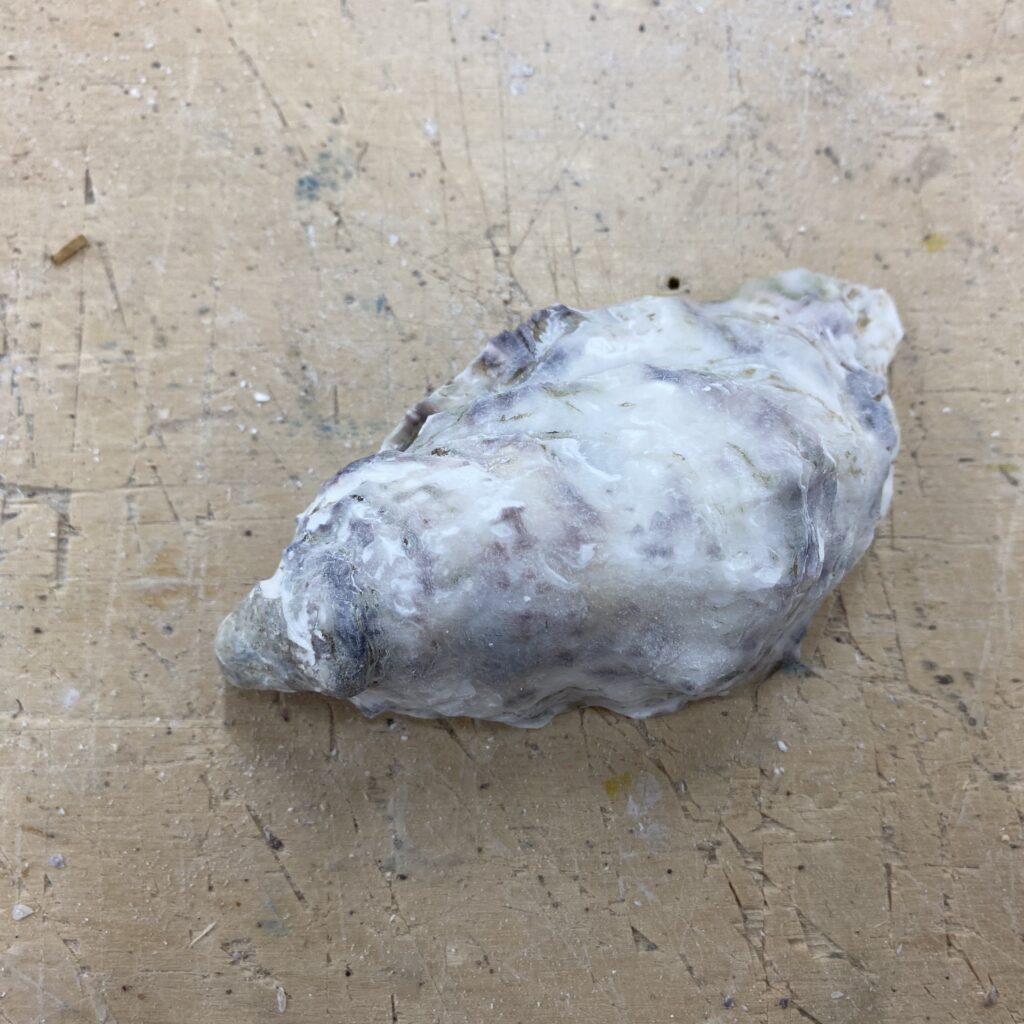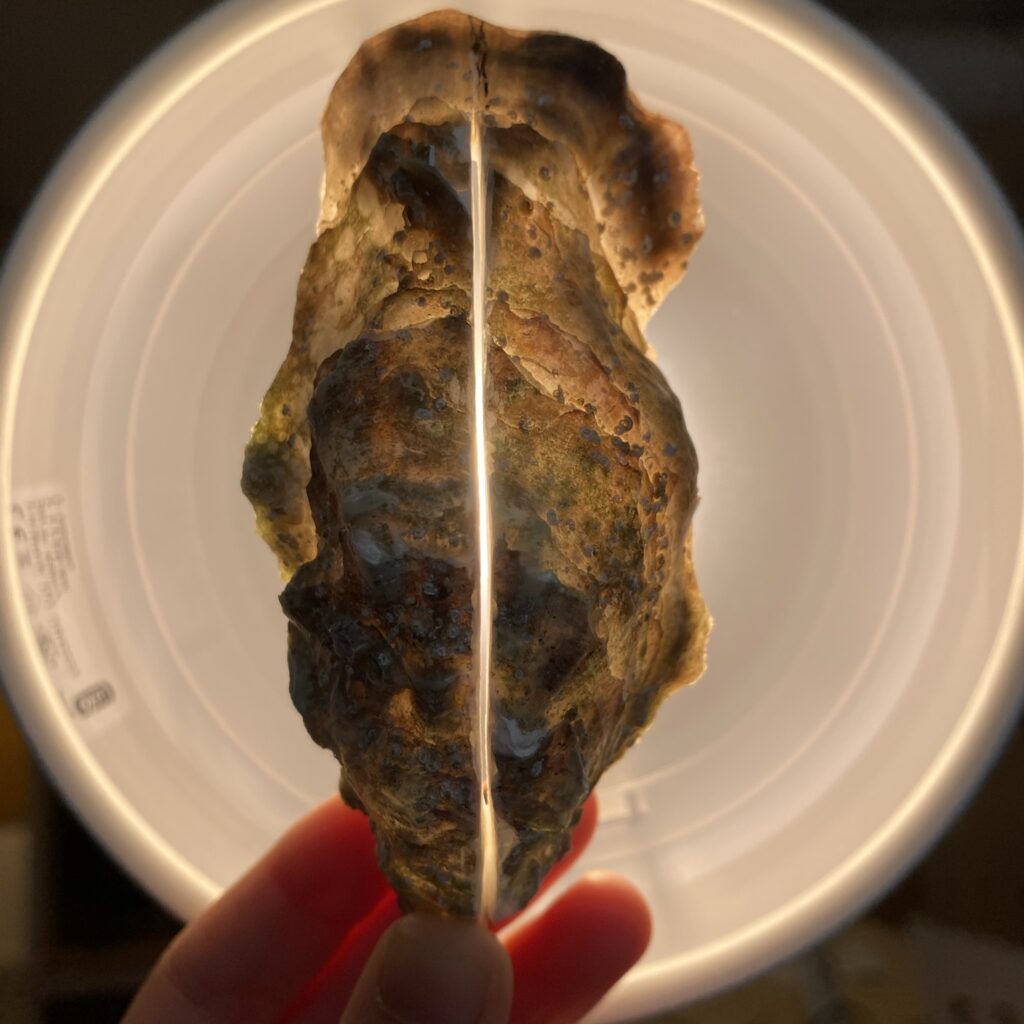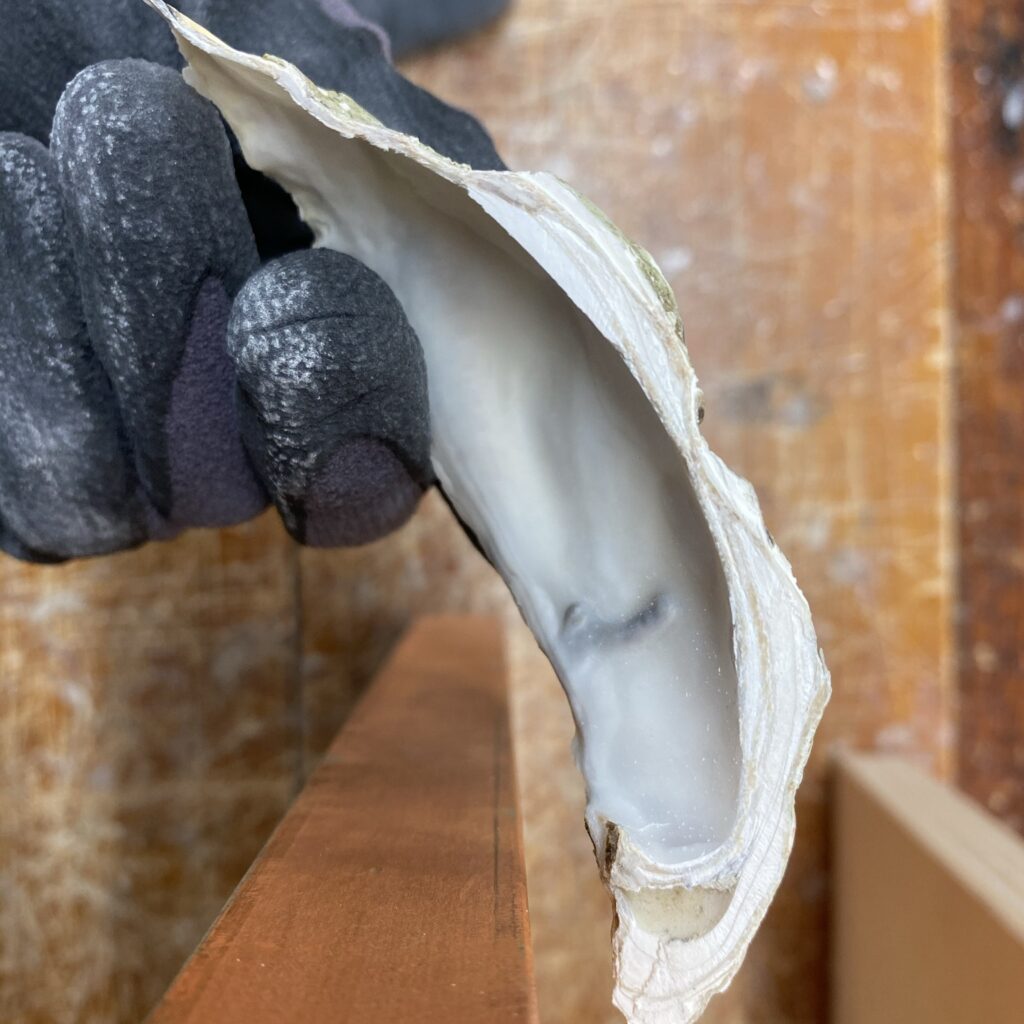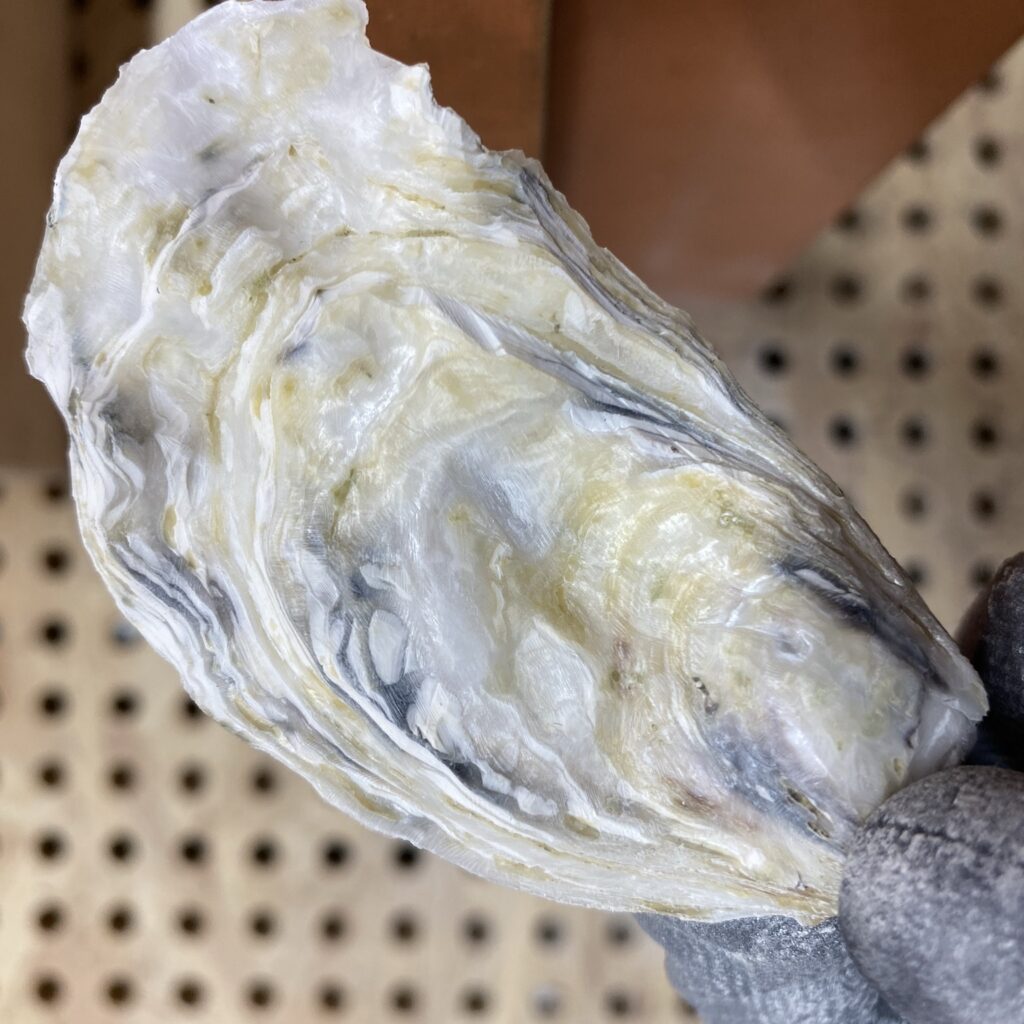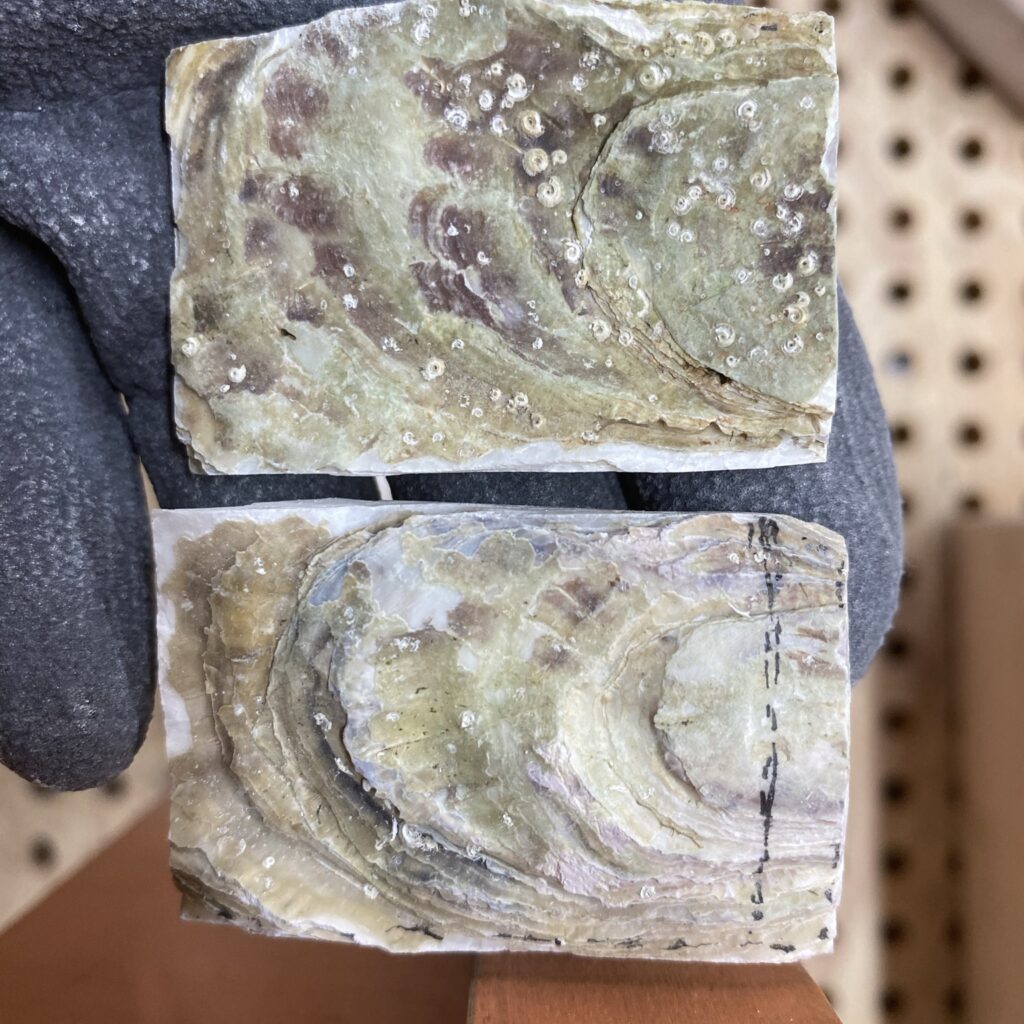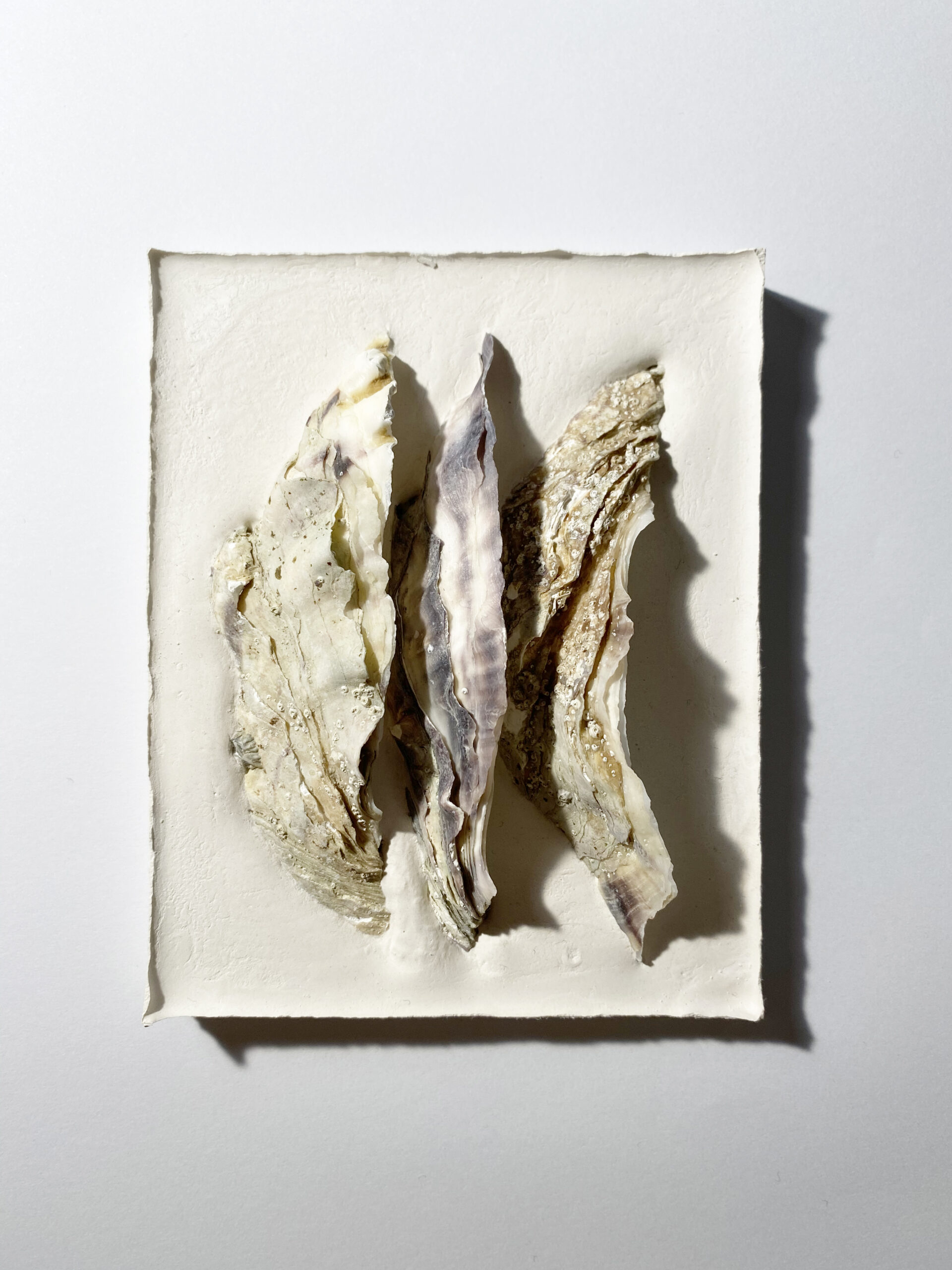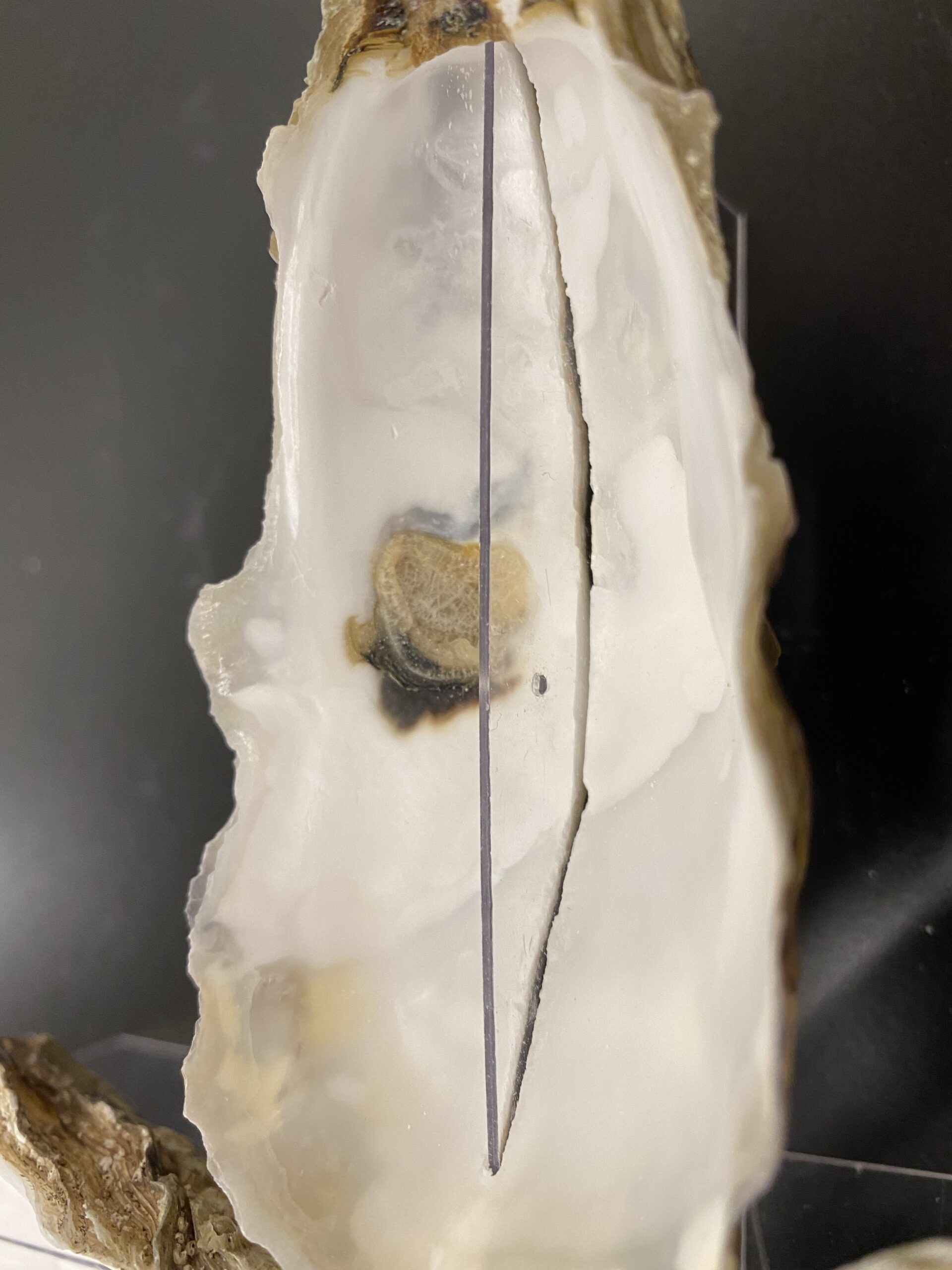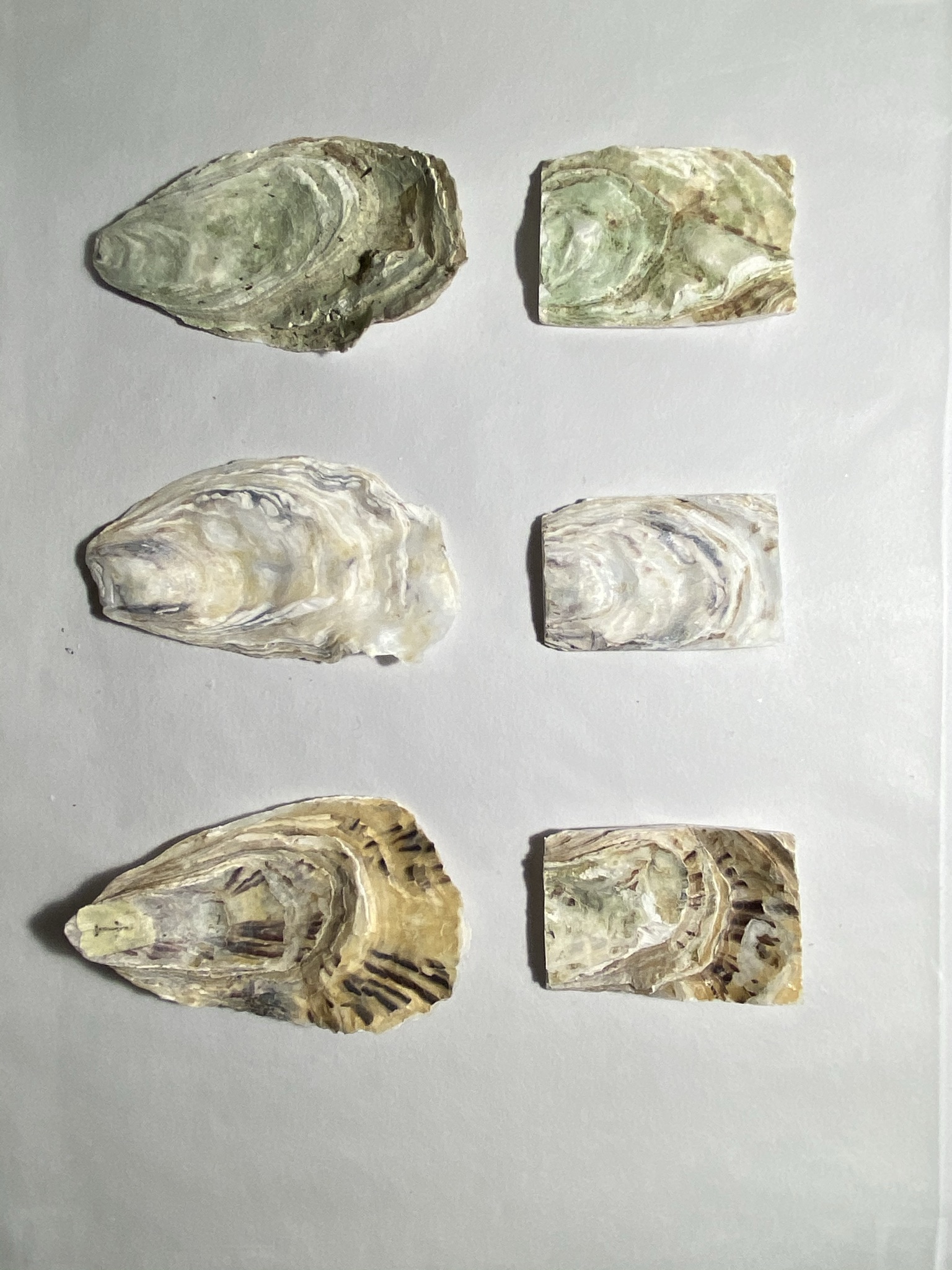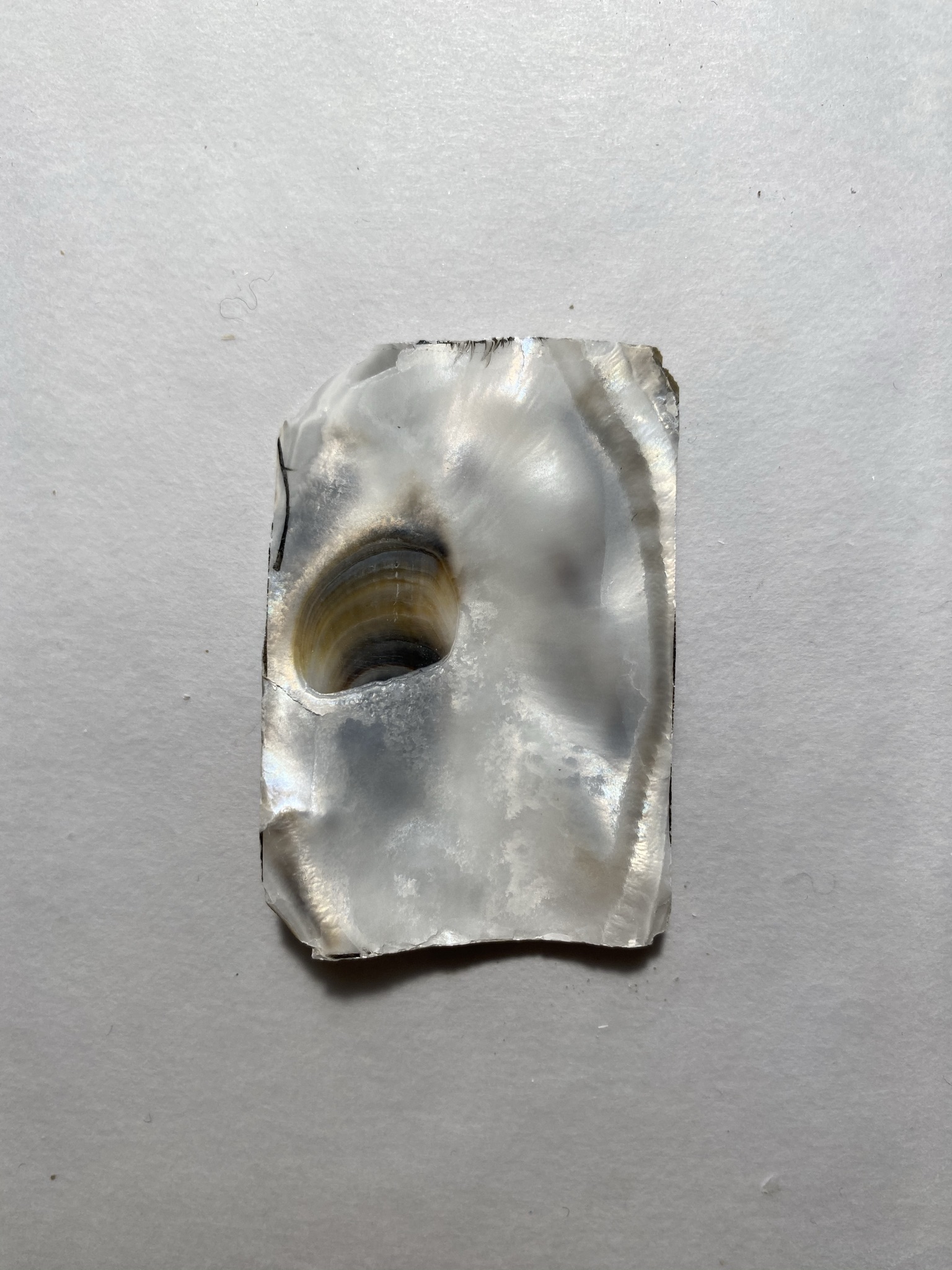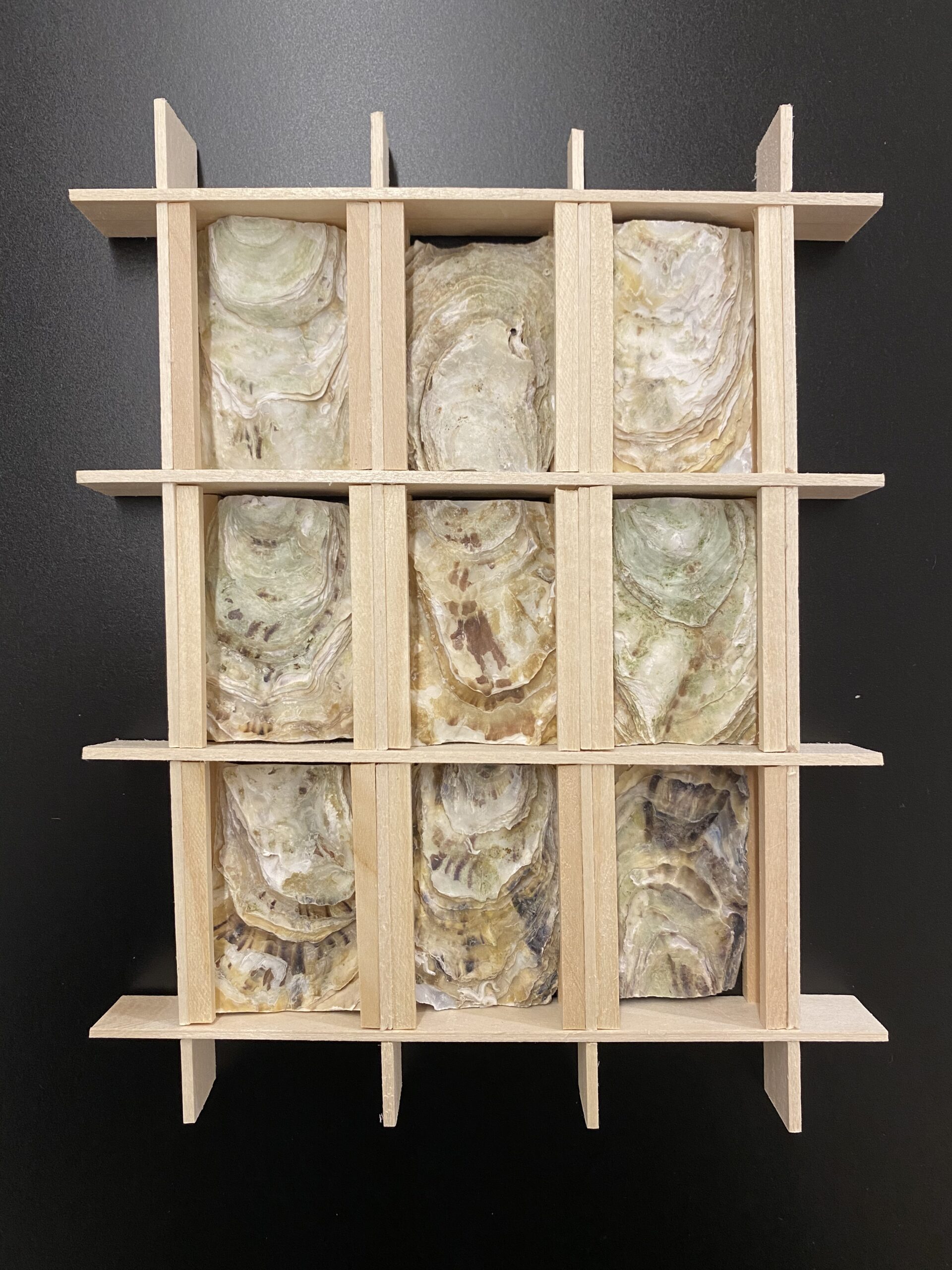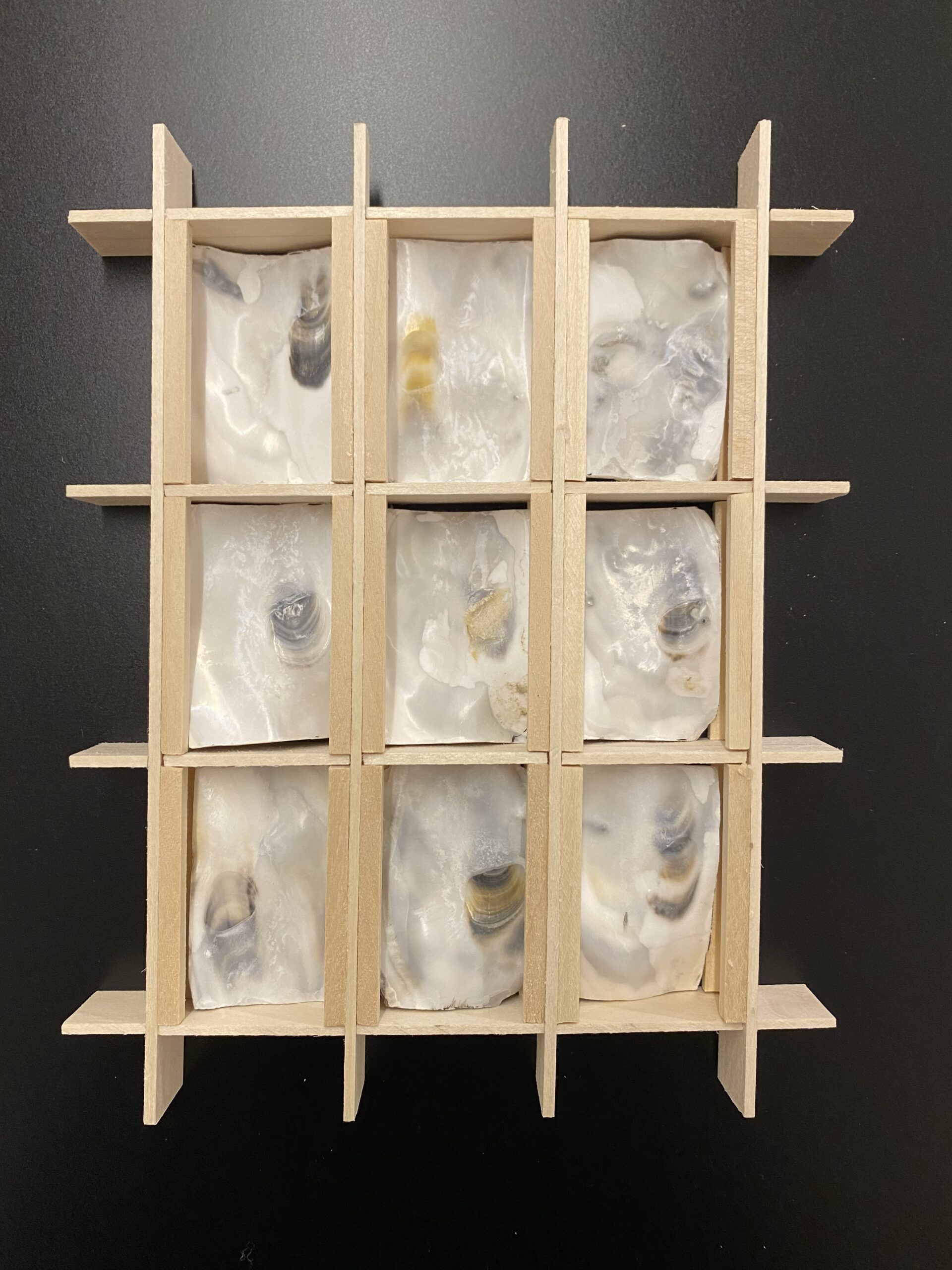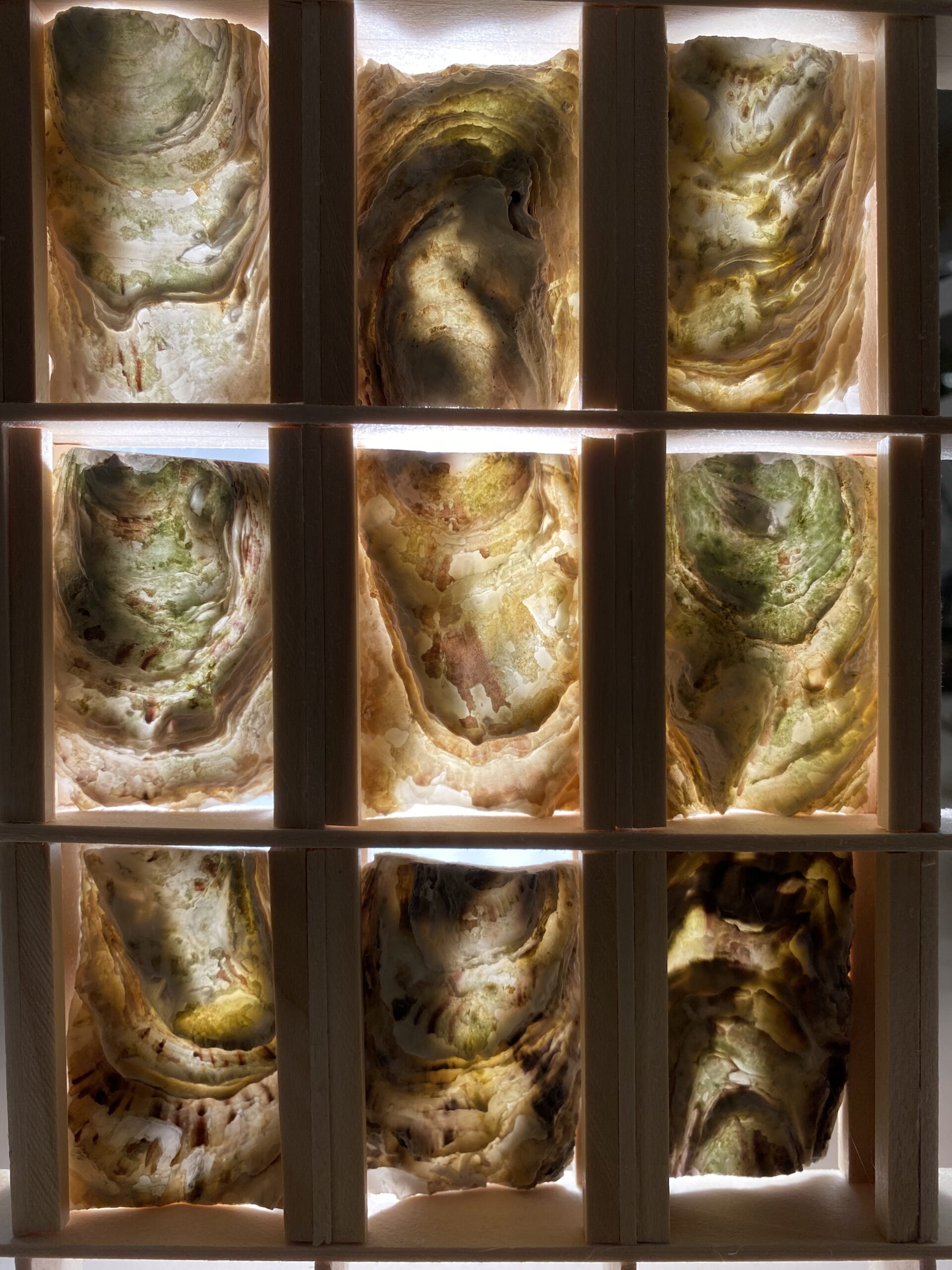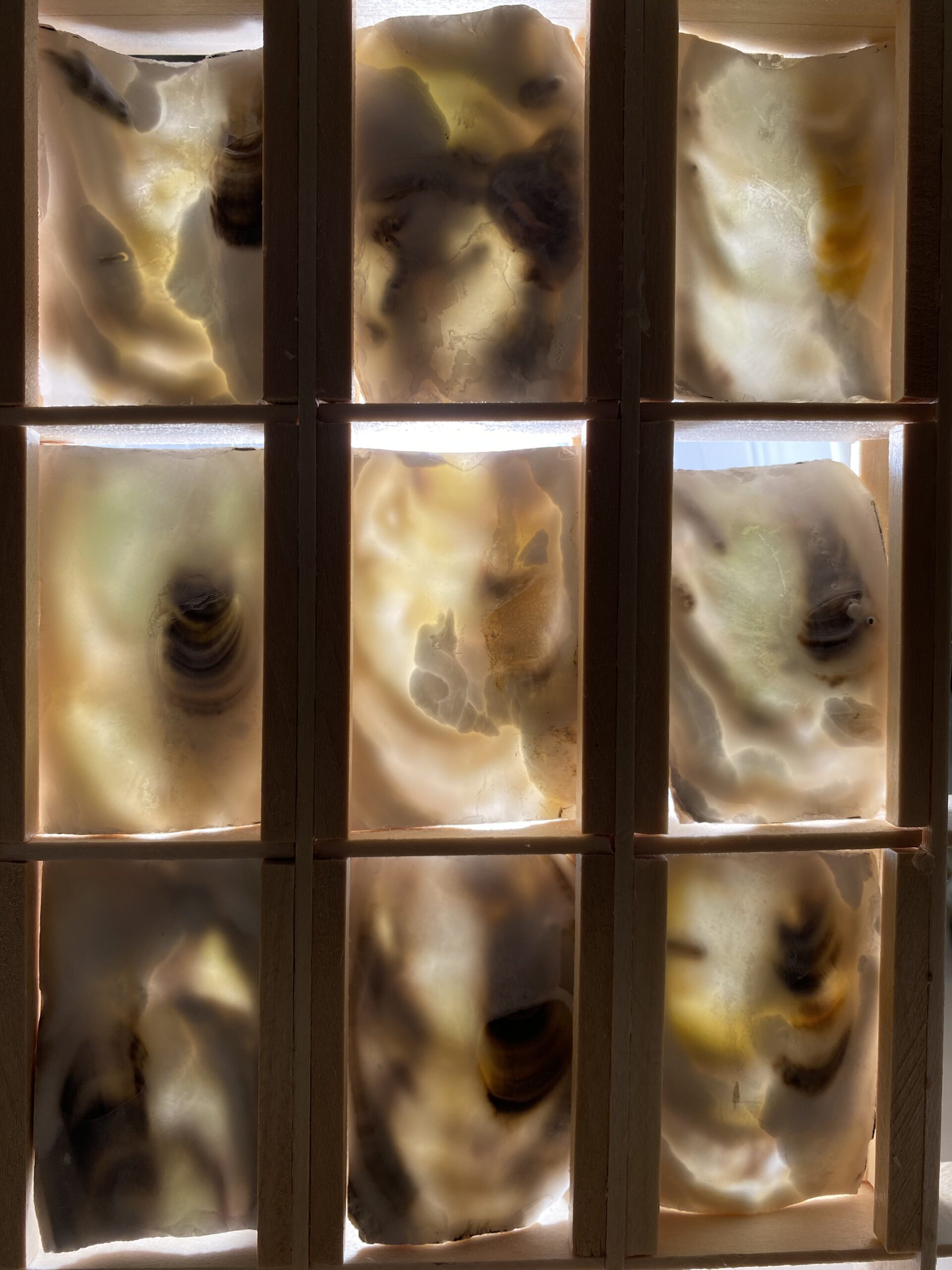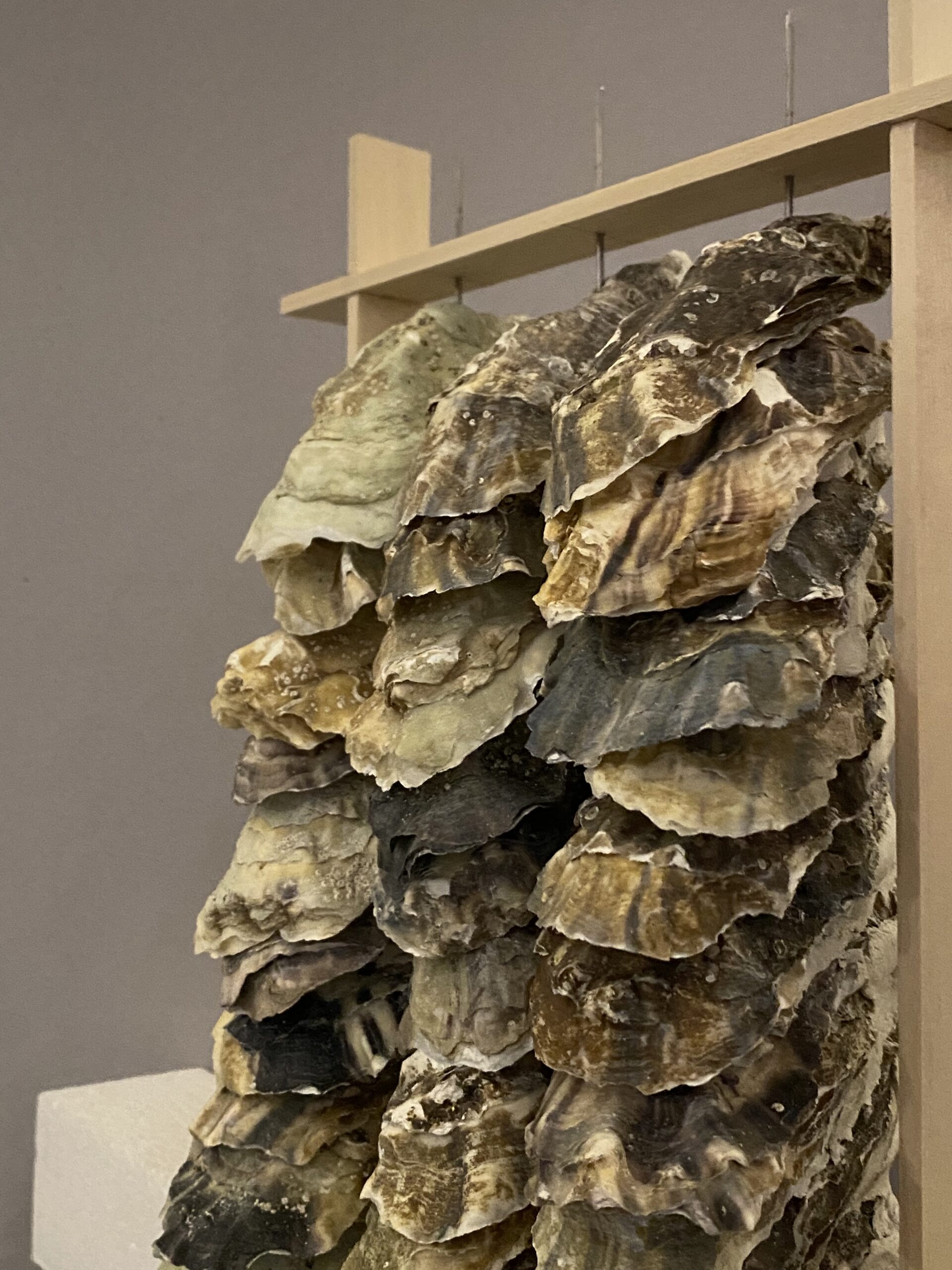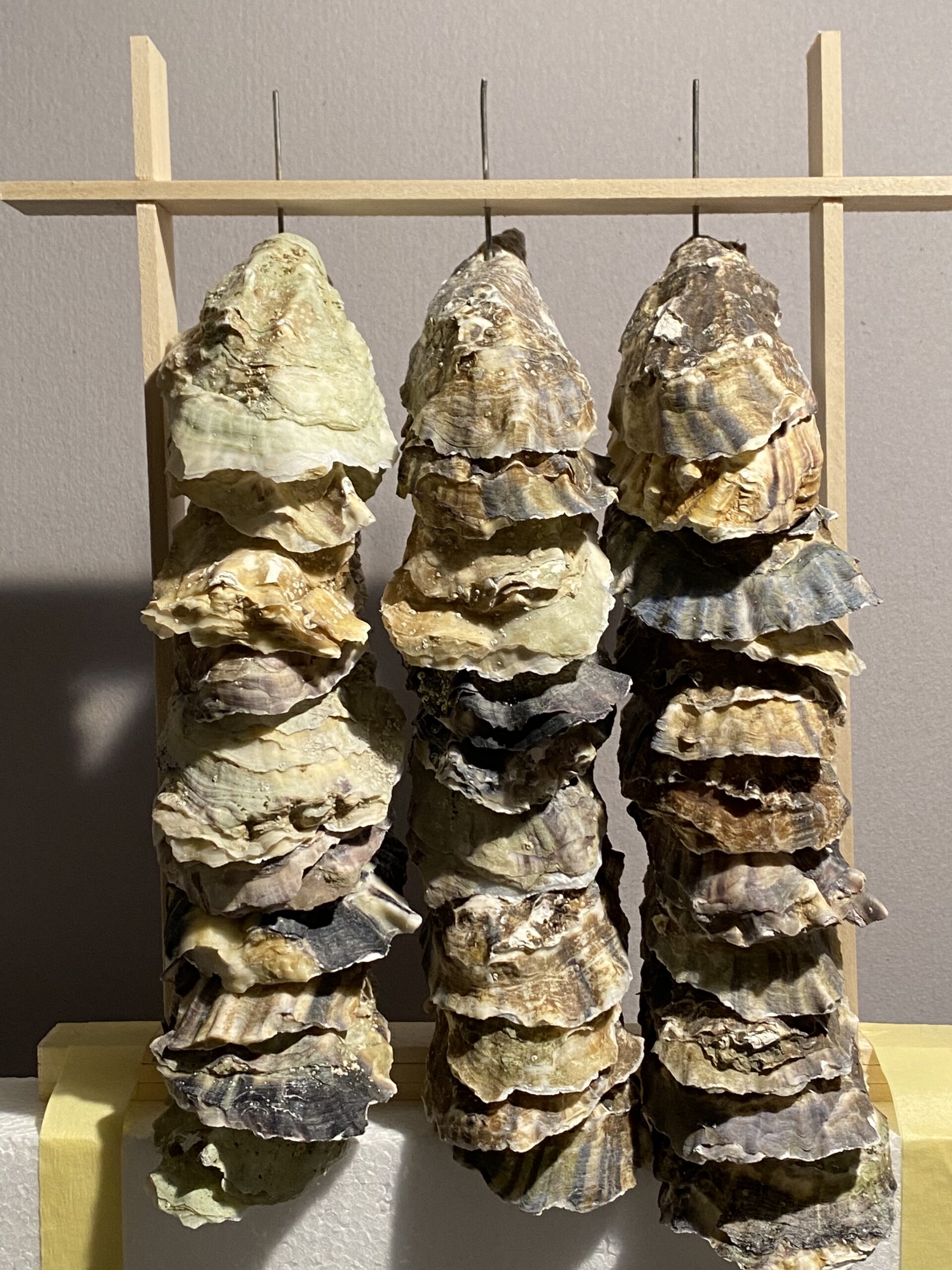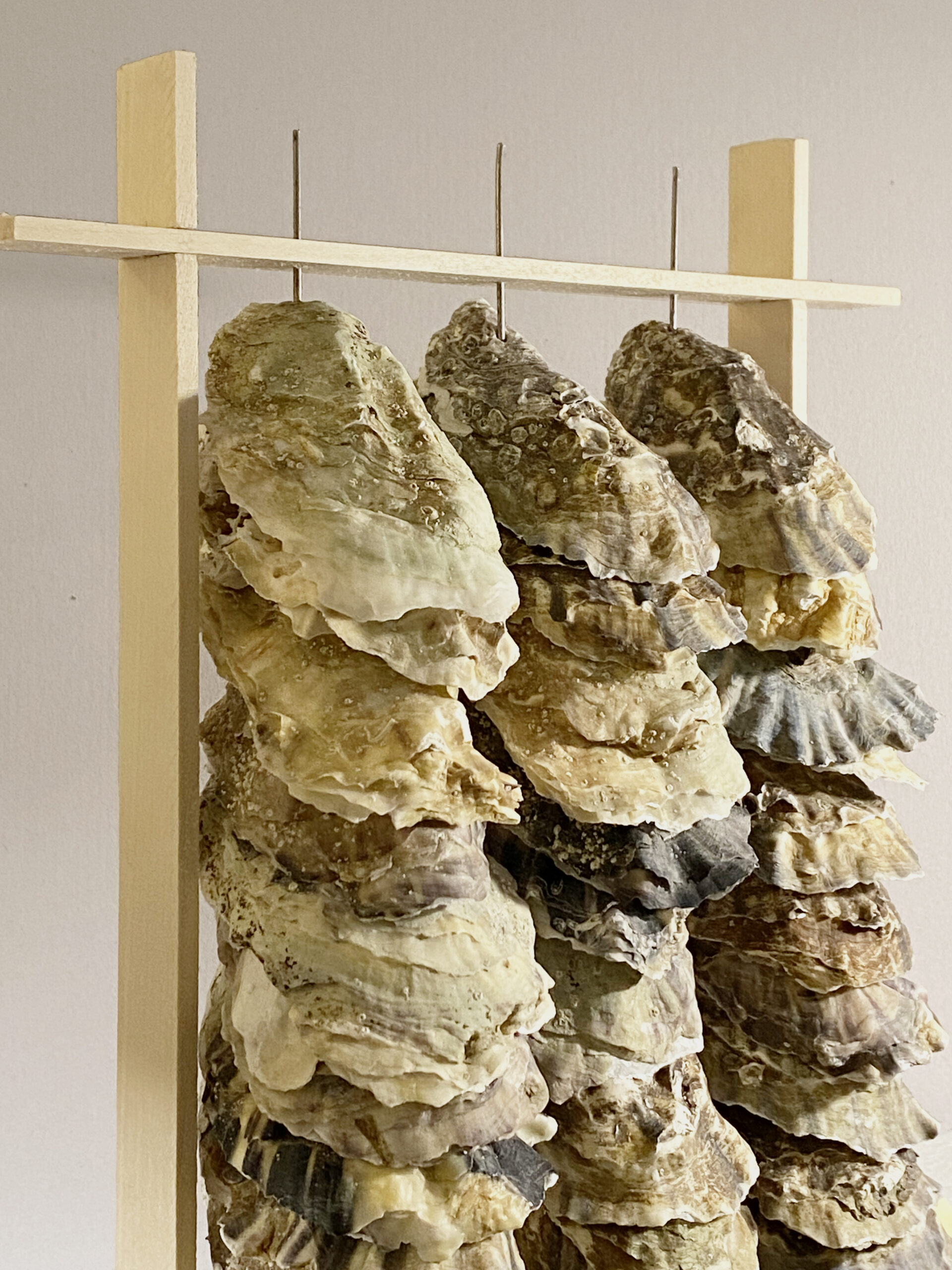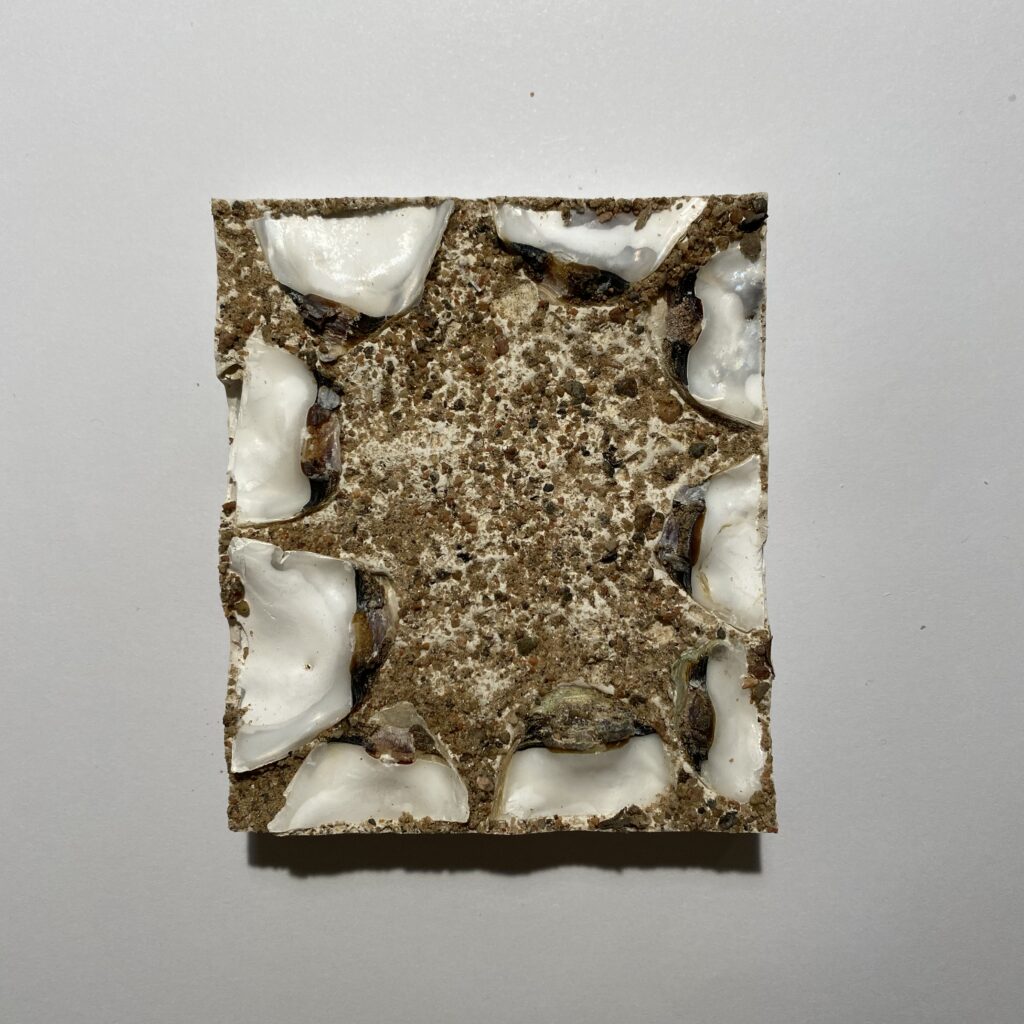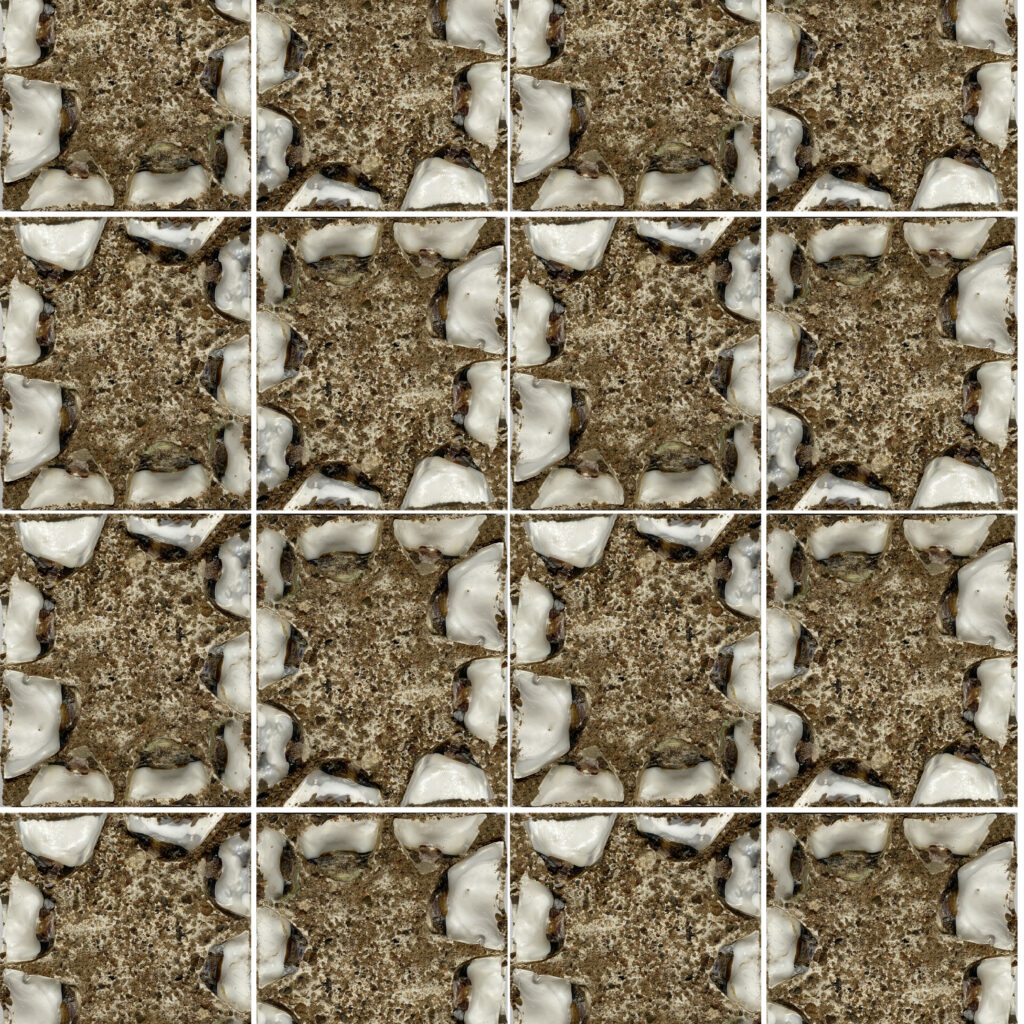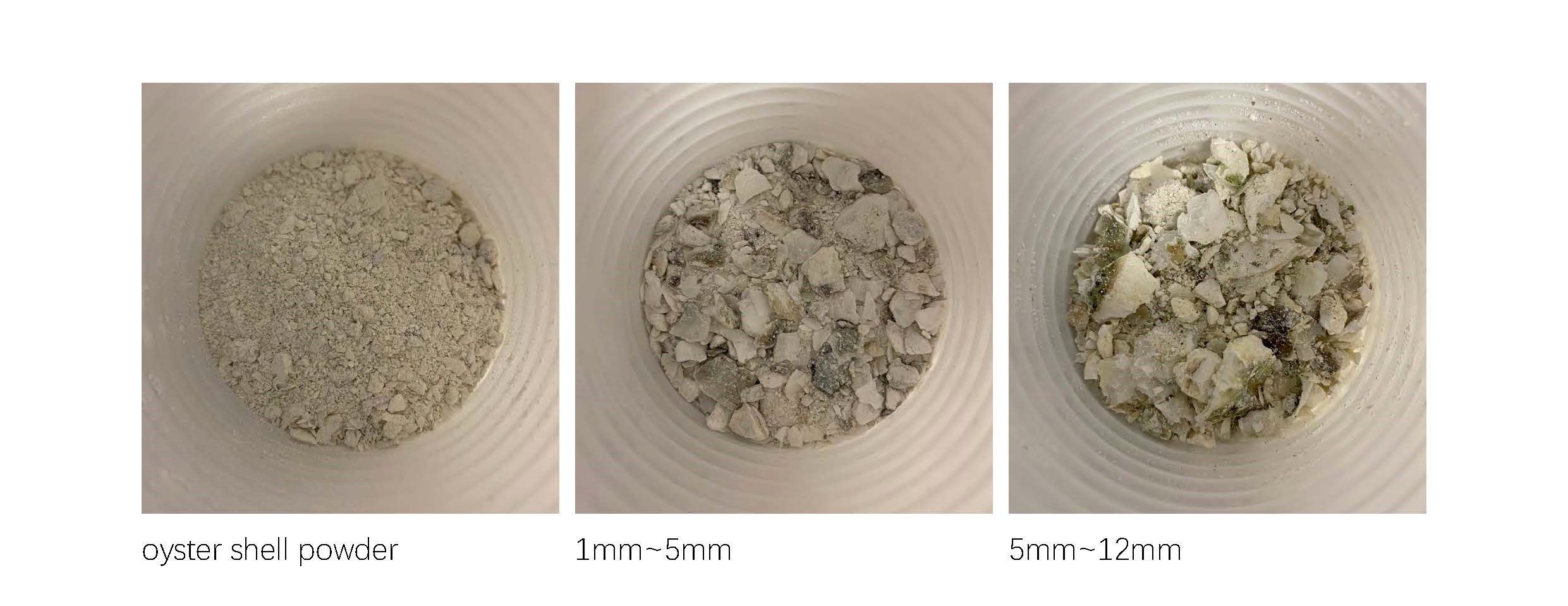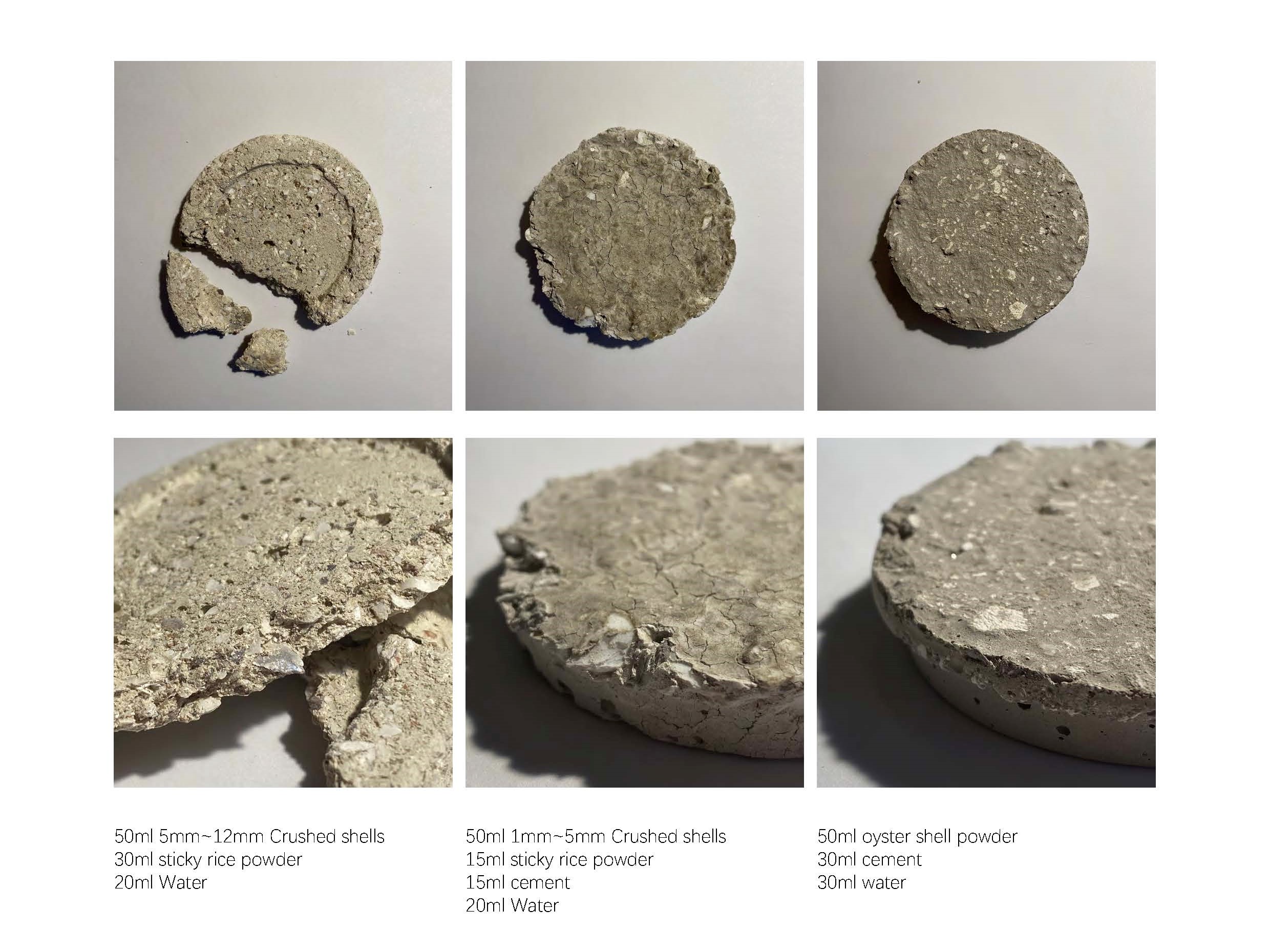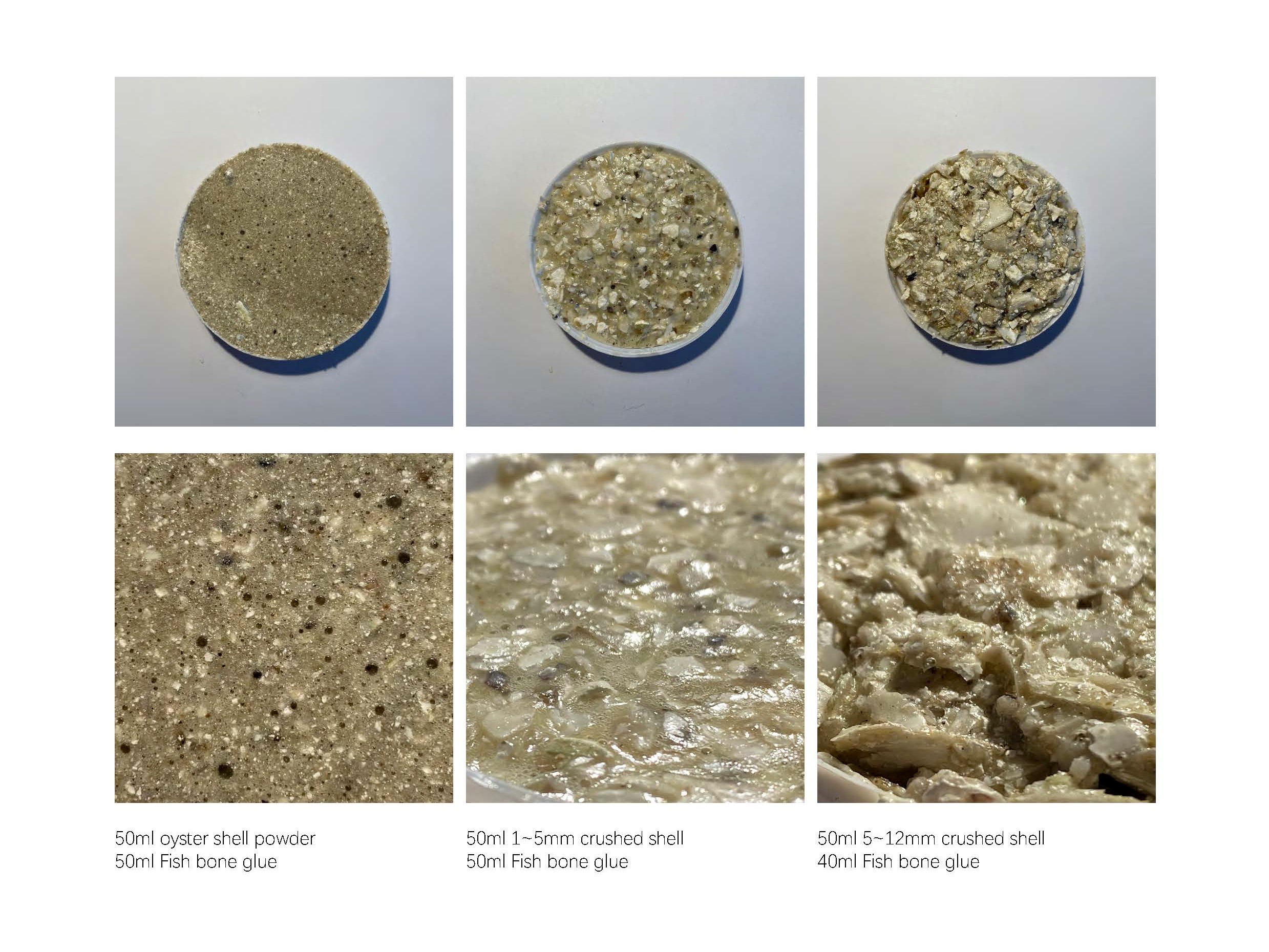Material experimenting on oyster shells
Cutting & joint
By polishing and cutting the shells, it created some linear boundaries and gaps..
The horizontal cross section allows the oyster shell to be laid out on a flat surface, making connections and forming regular geometric shapes.
The edge of the cut shells are not completely linear lines. So when fixing these materials, it is necessary to determine the width and depth of the frame slot according to the width difference of the shells.
Right: oyster shells with wooden frame, back
Right: oyster shells with wooden frame, Back (transmission of light)
To make the repairing or replacement of a damaged wall easier, modularize a oyster shell wall facade could be a way.
In addition to using adhesives between materials, steel wires can be used to aligning oyster shells which can strengthen the connection of the materials. However, this kind of connection will make the wall lose the randomness like those old residential house had.
The brown part of the oyster shell fragment forms an irregular boundary in the centre of the tile. If we multiply the tile, it might create a pattern (right).
Subtraction
Cement, concrete, plastic, sticky rice were used as materials of making oyster shell tiles.
The appearance, hardness and cracking of the tiles can be affected by the amount of material used and the size of aggregate. In the experiment, the more rice paste was used, the more fragile the sample was.
Rinse the cement on the surface while the bricks are not completely dry, exposing the oyster shell so that the resulting surface can feel rough and grainy. (picture-middle.)
If using sand paper to remove the cement, the resulting surface would be smooth with oyster white spots. (picture-right.)
Addition
In this experiment, fish glue (made of fish bones) was used as materials of making oyster shell tiles.
The surface concavity depends on aggregate size. Here the larger the aggregate size, the more uneven the sample surface was.
To make the tile smoother, fish glue-shell mixture with smaller aggregate can be applied on the sample to fill the the uneven surface.
